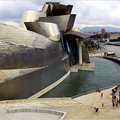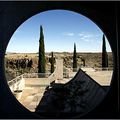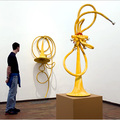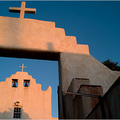
Ride board, La Farge, Wis.
NOTHING but sagebrush for 130 miles,” said the construction worker in the orange vest who was temporarily blocking U.S. Highway 20 in eastern Oregon.
As my Volvo idled in the midday heat, I looked past her at the landscape — at the dry, slowly rising hills matted with blue-green-purple tufts of hip-high scrub — then down at my map, and was impressed with her precision: For almost exactly 130 miles to the east, south and west, there was indeed nothing but sagebrush. This really was the desert.
I shut off the engine and crossed my fingers, hoping the car and I would survive.
I almost hadn’t made it this far. Back in Idaho, in 95-degree heat, the car had developed a troubling tendency to seize up with vapor locks, its liquid fuel turning gaseous and unusable, leaving me sweating and frantic at the roadside. I had to wait out one hot afternoon in a bowling alley in Arco, Idaho, near Craters of the Moon National Monument, and another watching “Live Free or Die Hard” in Caldwell, almost in sight of the Oregon border. I got so worked up I started speaking to the car, and even named it — Vivian — as if I could woo it into action.
Having driven roughly 1,000 miles a week for 11 weeks, I should have known better. Like an elderly St. Bernard, this 1989 Volvo 240DL station wagon, bought on Craigslist for $1,600 last May, moved only when — and if — it wanted to.
Still, she had brought me a long way. From New York, I’d driven south, across the increasingly Latino Carolinas, through the gold-rush hills of Georgia and into barbecue-mad and football-frenzied Alabama. Then I’d turned north, stopping in Kentucky bourbon country and living the communal life in rural Wisconsin, then zipping west across Iowa to the Black Hills and Indian reservations of South Dakota.
A sharp left had brought me back down through the great plains to the Vietnamese enclave of Oklahoma City and the weird (and wine-loving) people in Texas Hill Country. From the wild Mexico-New Mexico border, I turned north again, wending my way through the Rockies to the wilderness on the border of Wyoming and Montana.
Now, at last, having visited 26 states and nursed my car through thousands of dollars’ worth of repairs, I was in the home stretch, headed to the final stop, Seattle.
Many things surprised me on this trip, but the fact that I could eat cheap, great food on the road did not. I piled mountains of barbecue into my maw, chowed down on burgers of all sizes and devoured anything with blackberries, and still I spent only $20.98 a day on average. Sure, I could’ve spent even less, but who wants to subsist on Mountain Dew and microwave burritos?
Likewise, sleeping comfortably was rarely a financial burden. Thanks to Couchsurfing.com (where people list free places to stay, in return for the promise that you’ll eventually reciprocate), my camping gear, the occasional friend’s friend’s sister and, yes, the kindness of strangers, I didn’t have to stay in boring chain motels (or scary fleabags) very often, and averaged $31.21 a night for lodging.
This last installment of my journey would take in the deserts of Oregon, a place I was drawn to not only by their reputed beauty and remoteness, but by their place in American road-trip history. This was, in a way, where the fabled tradition began.
In 1903, the automobile was a novelty, expensive and unreliable. With no gas stations and few paved roads outside of major cities, horses and railroads offered more reliable transport than a creaky chassis powered by a breakdown-prone internal combustion engine.
Which is probably why Horatio Nelson Jackson, a 31-year-old doctor, bet friends at the University Club of San Francisco that he could drive a car from coast to coast. They scoffed. A few days later, Jackson was at the helm of a $3,000, two-cylinder Winton automobile, accompanied by Sewall K. Crocker, a mechanic and chauffeur, heading east.
To skirt the Rocky Mountains and the deserts of Nevada, they first drove north. But up in Oregon, they hit the sagebrush, and the Winton suffered. They lost all their gasoline because of a leak, had to drag the car through streambeds and once wound up being towed by a horse.
Still, somehow, they made it from Lakeview, along the southern Oregon border, through the desert to Burns and finally to Ontario, on the Idaho border. From there, despite having almost every part of the car fail at one point or another, they shot straight east to New York on what would eventually, more or less, become Interstate 80, winning the $50 bet and immortality. (The journey was chronicled in the Ken Burns documentary “Horatio’s Drive,” and its accompanying book, written by Mr. Burns and Dayton Duncan.)
If they, driving a 1903 Winton, could cross the desert, so could Vivian and I. And, as the day began to cool in Caldwell, I steered west in hope of tracing Jackson’s route in reverse.
In Oregon, my first stop was Ontario, where Jackson and Crocker had picked up tires and other supplies from the short-line railroad depot. The current depot, built three years later, is a lovely Queen Anne-style building that was in excellent repair when I arrived. (It’s on the National Register of Historic Places.) After snapping a few photos, I moved on to Ontario’s main attraction that weekend, the Malheur County Fair (admission $5).
Immediately, I noticed something odd. Though this county fair had everything you’d expect — a Ferris wheel, a country-music band, preserved-fruit competitions and livestock displays (“Lot of good steers here,” said one observer) — I spotted little details that surprised me, like the Asian-inspired “Happy Bowls” sold by the Idaho-Oregon Buddhist Temple Sunday School Women’s Association.
And although the teenagers roaming in packs dressed like American high-schoolers everywhere (i.e., head-to-toe Abercrombie & Fitch), I was struck that they came from all sorts of ethnic backgrounds — black, white, Asian, Latino, Indian. Back in New York City, this would have been routine, but for three months I’d been passing through towns and cities still subtly divided by race, and I’d almost forgotten there were places where different peoples not only coexisted but became friends.
Even 130 miles west, in the crossroads town of Burns, Ore., where I arrived just before midnight, I saw signs of cosmopolitanism: a bookstore-espresso bar, a Thai restaurant seamlessly integrated into the aging Elkhorn Club, a thriving 1930s-era movie theater. (Sadly, the budget hotel options were less urbane: I spent a night in a $60-a-night Days Inn, the next amid the garish 1970s décor of the City Center Motel, $45.)
Still, it didn’t seem a bad place to spend a couple of days, I thought. Horatio Nelson Jackson must have had it rougher. Back in 1903, the town was a mere 14 years old, and was just about as far as a town could be from a railroad station. Little wonder, then, that the arrival of Jackson’s Winton was a newsworthy event.
“A real live automobile caused considerable stir on our streets last Monday afternoon,” read the report in The Burns Times-Herald, which I dug out of the paper’s archives with the help of Randy Parks, a sports reporter. “This was the first automobile to visit Harney County and many old men had never seen one.”
In the Western History Room of the public library (80 West D Street, 541-573-6670, www.harneycountylibrary.org), I found more evidence of Jackson’s sojourn in Burns. A file there contained a number of other regional newspaper reports — “the machine broke down before it got out of town,” The Lake County Examiner reported — and, even better, a grainy photo of the Winton.
I also discovered that just two years later, in 1905, another pair of automobile drivers passed through Burns, on a race from New York to Portland, Ore., and declared that “Harney County has the best roads we have found in over 1,000 miles.” From rough desert to smooth tracks in just 24 months; the automotive century had truly begun, right there in Burns.
Today, the roads are still great, leading smoothly out into sagebrush country in all directions, and after my historical research and a $14.95 rib-eye lunch at Ye Olde Castle (186 West Monroe Street, 541-573-6601), I fired up Vivian and followed them south.
The desert, as the band America should have sung, is an ocean with its life underground, and a perfect disguise above, and as I cruised across the smooth asphalt strips, I got a sense of the fertile ecosystem and geology lurking amid the sagebrush. Low mountain ridges sprang up from nowhere, as if pulled from a bedsheet of dry earth, and from their tops, I could gaze down on low-altitude zones of green, damp marshland. Amid the silence of the desert, flocks of waterfowl and shorebirds — wigeons, dunlins, sandpipers — would flap their wings with a squawk and take off from shallow ponds.
I drove and drove, marveling at the feat of Jackson and Crocker. In my highly refined testament to Swedish engineering, I had traveled nearly 12,000 miles — thanks to America’s excellent road system, its talented mechanics and the indispensable guidance of you, my readers — but it had never been easy. Jackson, however, had had none of that, not even roads or maps, and yet he managed 30 miles per hour through this foreboding land. In comparison, my summer excursion paled.
But still I drove, stopping to visit the Peter French Round Barn (www.roundbarn.net) in Harney County, an elegant 19th-century wooden structure, 100 feet in diameter, where ranchers used to break horses in the winter.
And 40 or 50 miles down a gravel road (and just over 100 miles southeast of Burns), I came upon Alvord Hot Springs, a concrete tub of warm, slightly mossy-feeling water where I soaked for 30 minutes, indulging in a free luxury that had eluded me in Colorado (where a broken transmission sabotaged my plans to visit every spring in the Rocky Mountains).
Finally, a few minutes farther down the gravel road, I rounded a bend and arrived at the Alvord Desert, with sand as fine and white as any you’d find on any tropical beach. I walked out there and stared at the vastness, at the russet mountains blackening at nightfall, and thought of Luke Skywalker, who gazed at the twin setting suns of Tatooine and imagined himself leaving home for great adventure.
Me, I knew that my journey would be ending quite soon. The next day I would cross the Cascade Mountains, head up the coast toward Seattle, sell Vivian on Craigslist and fly home to Brooklyn — and to my beautiful, patient wife, Jean. But after this unlikely desert, I might never again feel as remote from the world, as far from the everyday bustle of American life, its pressures and responsibilities.
Had Jackson felt this, too? Had he not wanted the journey — with all its frustrations and epiphanies — ever to end, despite the enticements of home?
I considered pitching my tent right there, but I had no food, and, in any case, I needed to make progress toward the coast if I wanted the next day’s drive to be manageable. So, night having fallen, I put Vivian into gear and drove down the gravel road, rabbits scampering across my path, a dusty rain falling, lightning cracking horizontal in the distance, and tried to relish the last 100 miles before bedtime. It went by in a blink.






